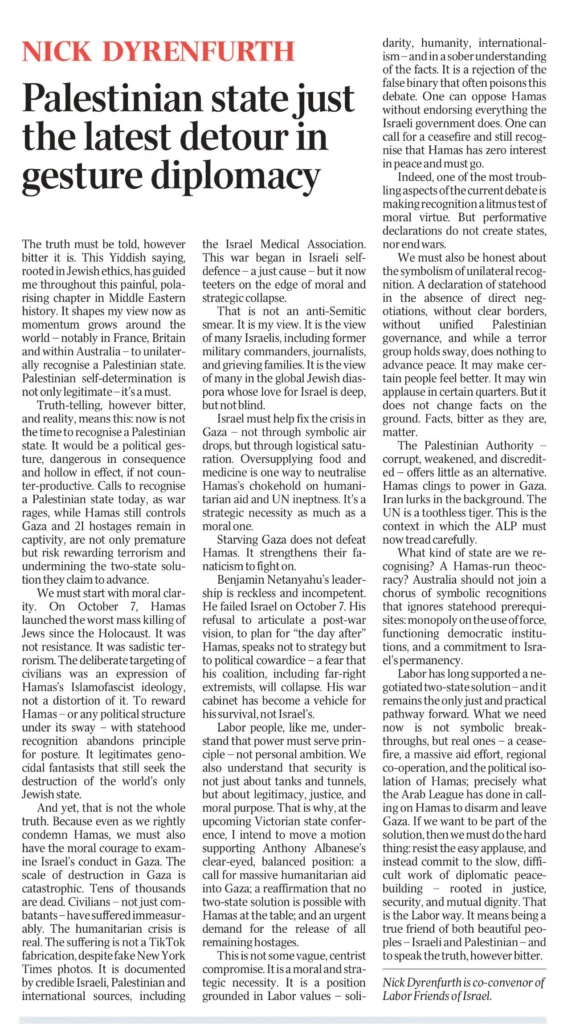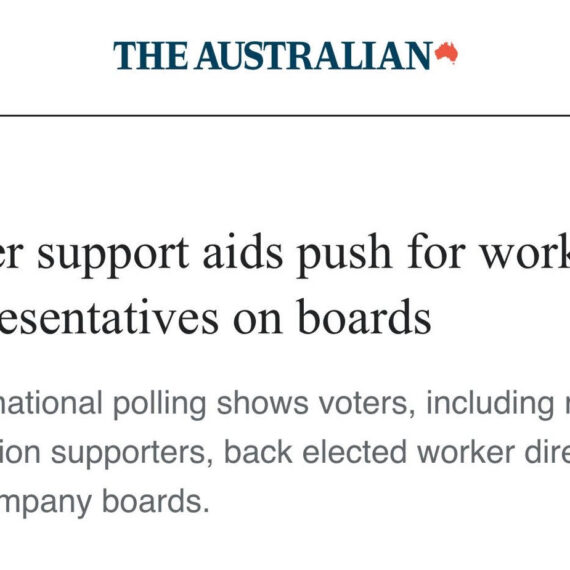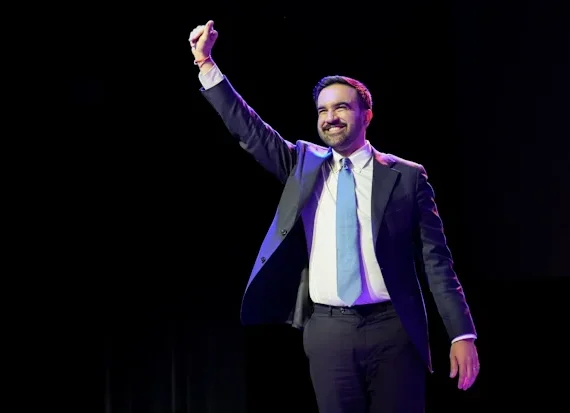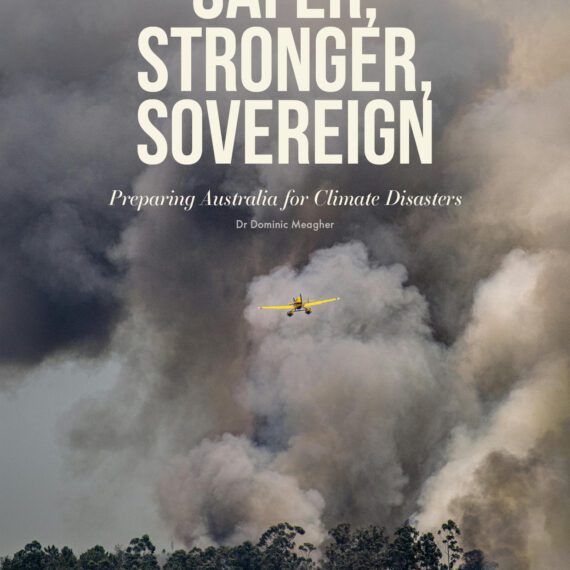

Nick Dyrenfurth
Executive Director of the John Curtin Research Centre

Dominic Meagher
Chief Economist of the John Curtin Research Centre
Australia is facing a once-in-a-generation reckoning. Productivity growth – the bedrock of rising wages and living standards – has reached its lowest point in 60 years. The old playbook is dead. The new one demands bold national coordination, strategic investment and a long-overdue economic rebalancing. The question is not whether Australia must lift productivity, but how we do it – and who it serves.
Our productivity woes are structural: a narrow industrial base and lack of economic complexity, underinvestment in skills (which the Albanese government has begun addressing) and innovation, and a capital allocation model skewed toward speculative rather than productive enterprise. In short, our economy is underprepared for the immense challenges and disruptions now on our doorstep – from revolutionary technological change and geopolitical uncertainty to climate flux. To meet this moment, we must reimagine productivity.
This means growing smarter, not just faster. It means investing in capabilities that enhance – not destroy – human effort. And it means ensuring that growth is tech oriented and inclusive, regionally distributed and geared towards national resilience. The fair go must meet the innovation age.
Our latest discussion paper lays out six strategic pathways to reimagine and revitalise Australian productivity. These are the pathways we must pursue to diversify our economy, reindustrialise key sectors and lift sovereign capacity, reduce vulnerability to global shocks, and raise per capita GDP the Australian way. Innovation Nation maps the pathways: responsible AI, manufactured housing, disaster resilience, financial reform, healthier workplaces, and employee representation. Together, these reforms can future-proof our economy and rebuild the compact between working Australians and the nation’s economic institutions.
Artificial Intelligence is no longer a fringe technology – it’s the defining infrastructure of the 21st century economy. Managed wisely, it will seed new industries, drive high-wage employment, create new jobs and new export markets, and augment human capability. Managed poorly, it will merely automate jobs, leading to high unemployment, low quality production, and more inequality. We need an AI strategy that reflects Australia’s values, not Silicon Valley’s whims.
That starts with public investment in sovereign AI capability and a national AI strategy –including expanding research through the CSIRO and R&D, doubling the number of postgraduate AI graduates, and creating regional AI hubs tied to local industries. We propose universal access to AI education and skills training, embedded in TAFE, universities, small and medium sized (SME) businesses, and public service upskilling. Perhaps our jobs may not be taken by AI, but they could easily be taken by countries who do AI better than us.
AI should enhance human effort, not replace it. A teacher should use AI to cut admin hours, not lose autonomy. A nurse should be supported, not surveilled. AI is a tool—like a pen or spanner—not a person. Its use must remain accountable to Australian law, ethics, and workplace rights. We need AI-ready workplace rights, ensuring consultation on AI use in rostering, surveillance, and training, with a mandated worker voice.
If we get this right, AI can help SMEs thrive, improve working life, and lift wages by enhancing the productivity of entire sectors.
The housing crisis is no longer just a social issue—it’s an economic one. The solution isn’t just more supply – it’s smarter supply. Australia must embrace manufactured housing: modular, prefabricated, and built to the highest standards quickly. Globally, Manufactured Housing is mainstream in high-productivity countries. In Sweden, over 80% of new detached houses are prefabricated. Here, it’s just 3%.
Manufactured housing shortens build times and stabilises employment. It will allow us to reindustrialise Australia’s suburbs and regions by building high-quality housing components in factories: reshoring manufacturing jobs and addressing supply shortages and affordability. This sector could even become an export industry. With quality Aussie materials and climate-smart standards, we could be selling housing modules to our region, boosting both our construction and trade sectors. Government must lead by removing regulatory barriers, aligning MH capability with the National Reconstruction Fund and state housing targets, co-invest in skills and training, and procurement. A strong MH industry supports full employment and housing affordability – at once.
Climate disasters are no longer rare but a constant economic drag. Floods, fires and storms displace communities, destroy infrastructure, and add billions in insurance and rebuilding costs. Our current model—relying heavily on the ADF—is unsustainable.
We need a civilian-led National Climate Resilience Corps, focused on prevention, emergency response, and regional development. Trained like reservists and embedded in (regional and rural) communities, this permanent disaster workforce would deliver jobs, skills, and national preparedness. It’s about resilience as productivity—not just as risk management. This Corps would work alongside TAFE and advanced manufacturing hubs, producing vital gear—like PPE, drones and mobile clinics—right here in Australia. It would also allow us to support Pacific neighbours. Disaster readiness is not a cost—it’s a smart, future-focused investment.
Australia has one of the most profitable banking sectors in the world and one of the least productive when it comes to capital allocation. Our banks overwhelmingly lend against property, not enterprise, which is a major reason behind stalling productivity. Lending to SMEs and start-ups is harder to secure, more expensive, and often requires putting your house on the line. We can fix this.
We propose a suite of measures to realign capital flows with the productive economy – facilitating investment to innovation and enterprise, stimulate start-up growth including in our undercapitalized regions, and productive enterprise rather than endlessly adding leverage to the price of existing housing stock or funnelling more money to established businesses that have little new to offer. This might entail setting minimum levels of lending to Australian businesses (and SMEs) relative to all lending; reforming prudential regulation to stop penalising start-ups; support regional or mission-oriented financial institutions; and facilitating superannuation funds to work more closely with the venture capital sector.
Here’s a hidden productivity killer: sick workers. The Covid-19 pandemic highlighted the heavy economic toll of poor air quality, labour shortages, reduced workforce participation, and strain on healthcare systems. Airborne illness is not a seasonal nuisance. Yet since the pandemic, the number of Australians off sick each month has surged 25% above pre-Covid levels. That’s roughly 150,000 more people absent each month due to illness—dragging down output and driving up health costs. Long Covid is quietly disabling large sections of the workforce—especially education, health, and retail. Clean indoor air is productivity infrastructure—just like broadband or electricity.
We need enforceable minimum indoor air quality standards, regular monitoring, and retrofits of public buildings—from schools to hospitals. Businesses should be incentivised to boost the uptake of clean air technology and open-air venues (and required) to improve ventilation, filtration, and infection controls. Require large employers to report on air safety protocols as part of OH&S standards and make real time indoor air quality data viewable in key public venues such as train stations, hospitals and aged care, government buildings, and schools. This isn’t just public health and good for workers, but economic common sense.
Productivity isn’t just about technology. It’s about effective decision-making. That’s why we’re calling for a new governance model that puts workers on company boards. Inspired by successful European models such as Germany, employee directors would bring operational knowledge to boardrooms, helping steer companies toward long-term, sustainable growth.
Companies with employee representation have been shown to be more innovative, more resilient during crises, and better at retaining staff. Workers have unique insights—especially during industrial transitions like AI and automation.
Employee directors would hardwire the practical insights of working people into corporate decision-making – improving trust, outcomes, and accountability – recognising that productivity gains (especially AI) are impossible without listening to the people who know what works best on the shopfloor.
Together, our productivity pathways form a blueprint for a more dynamic, resilient and fairer more future-ready economy powered by higher productivity that serves people not the other way around. Just as the postwar era was marked by nation-building investments in steel, energy and education, so too must this generation invest in the digital backbone of our economy. Just as John Curtin and Ben Chifley did nation-building for an industrial era, we must now build for a digital, decarbonised and decentralised one. Let’s seize this decade—before it seizes us.





